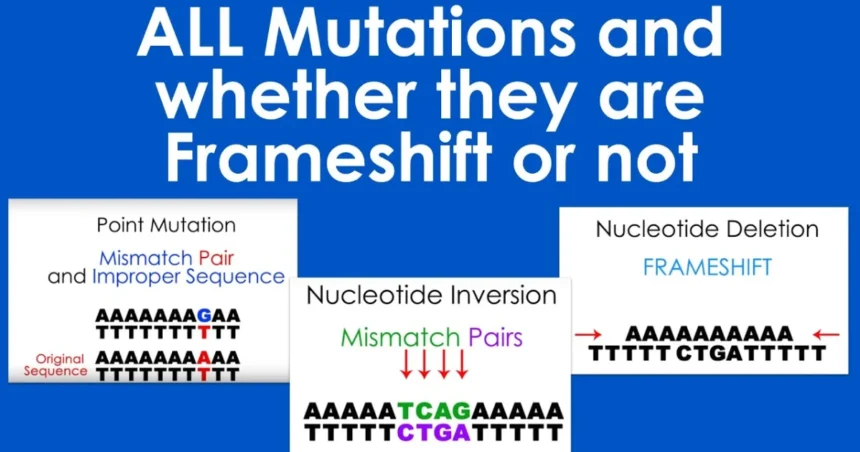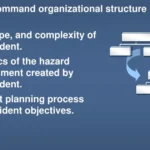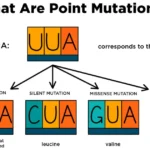When we talk about mutations, we’re diving into the fascinating world of genetics—where tiny changes in our DNA can lead to big differences in how living organisms function. Mutations are like typos in the instruction manual of life, and they come in different forms. Two of the most common types which is a point mutation and not a frameshift mutation? But what exactly are they, and how do they differ? In this article, we’ll break it down in a way that’s easy to understand for anyone, no matter your age or background. We’ll also include a handy table to compare these mutations clearly. By the end, you’ll have a solid grasp of what makes a point mutation distinct from a frameshift mutation and why it matters.
which is a point mutation and not a frameshift mutation?
Before we dive into the specifics, let’s start with the basics. DNA is like a blueprint that tells your body how to build everything it needs—your eyes, your heart, even how your cells work. This blueprint is written in a code made up of four chemical “letters”: A (adenine), T (thymine), C (cytosine), and G (guanine). These letters are arranged in a specific order to form genes, which are instructions for building proteins that do all the work in your body.
A mutation is a change in this DNA sequence. Think of it like a typo in a recipe. If you’re baking a cake and the recipe says “add 2 cups of sugar” but you accidentally read “2 cups of salt,” the cake won’t turn out right. Similarly, mutations can change how proteins are made, which can affect how an organism grows, functions, or even survives.
Mutations can happen for many reasons, like exposure to radiation, chemicals, or even random errors when DNA is copied during cell division. Some mutations are harmless, some can cause diseases, and others might even be beneficial. Today, we’re focusing on two specific types: point mutations and frameshift mutations.
What Is a Point Mutation?
A point mutation is a small-scale change in the DNA sequence where one single letter (nucleotide) is swapped for another. Imagine you’re writing the word “CAT” and you accidentally write “CUT.” Just one letter changed, but it makes a whole new word. In DNA, a point mutation might change a single A to a T, or a C to a G.
Types of Point Mutations
Point mutations come in a few flavors, depending on what happens when that single nucleotide changes. Here’s a quick rundown:
- Silent Mutation: This is like a harmless typo. The change in the DNA doesn’t affect the protein that’s made. For example, if the DNA code changes from “CGA” to “CGC,” both codes might still tell the cell to make the same amino acid (a building block of proteins). So, the protein works just fine.
- Missense Mutation: This is like a typo that changes the meaning of a word. The change in one nucleotide leads to a different amino acid being added to the protein. For example, if the DNA code changes from “CGA” to “CCA,” the protein might end up with a different amino acid, which could affect how it works. This is what happens in sickle cell anemia, where a single nucleotide change causes red blood cells to become misshapen.
- Nonsense Mutation: This is like a typo that cuts a sentence short. The change in one nucleotide creates a “stop” signal in the DNA, so the protein gets cut off early. This can make the protein completely nonfunctional, which can lead to serious health issues.
Why Point Mutations Matter
Point mutations are precise and only affect one spot in the DNA. They don’t mess with the overall structure of the gene, so their impact depends on where they happen and what they change. For example:
- A silent mutation might go unnoticed.
- A missense mutation could cause a minor or major change in how a protein works.
- A nonsense mutation could stop a protein from being made at all, which might cause diseases like cystic fibrosis.
Point mutations are common and can happen naturally during DNA replication or due to environmental factors like UV radiation. They’re like small tweaks in the genetic code—sometimes they’re no big deal, and sometimes they make a big difference.
What Is a Frameshift Mutation?
A frameshift mutation is a bigger deal. It’s not just a single letter change—it’s like adding or deleting a letter in the middle of a word and messing up everything that comes after it. In DNA, a frameshift mutation happens when one or more nucleotides are added (inserted) or removed (deleted), but not in a group of three. Since DNA is read in groups of three letters (called codons), adding or removing one or two letters shifts the entire “reading frame” of the gene.
Let’s use an analogy. Imagine this sentence as a DNA sequence:
THE CAT ATE THE RAT
Each group of three letters is like a codon. Now, if you delete one letter, say the “H” in “THE,” the sentence shifts:
TEC ATA TET HER AT
Suddenly, the sentence doesn’t make sense anymore. The same thing happens in DNA. A frameshift mutation scrambles the instructions for building a protein, often making it completely useless.
Types of Frameshift Mutations
- Insertion: When one or more nucleotides are added to the DNA sequence. For example, if an extra “A” is inserted into a sequence like “ATG-CGT,” it might become “ATG-ACG-T,” throwing off the reading frame.
- Deletion: When one or more nucleotides are removed from the DNA sequence. For example, if a “C” is deleted from “ATG-CGT,” it might become “ATG-GT,” again shifting the reading frame.
Why Frameshift Mutations Matter
Frameshift mutations are usually more serious than point mutations because they mess up the entire gene downstream of the mutation. The protein that’s made (if any) is often completely nonfunctional. This can lead to severe genetic disorders, like Tay-Sachs disease or Duchenne muscular dystrophy, where the body can’t produce critical proteins properly.
Key Differences Between Point and Frameshift Mutations
To make things crystal clear, let’s compare point mutations and frameshift mutations side by side. The table below summarizes the key differences:
| Feature | Point Mutation | Frameshift Mutation |
|---|---|---|
| Definition | A change in a single nucleotide in the DNA. | An insertion or deletion of nucleotides (not in multiples of three) that shifts the reading frame. |
| Effect on DNA | Affects only one codon (group of three nucleotides). | Affects all codons after the mutation. |
| Types | Silent, missense, nonsense. | Insertion, deletion. |
| Impact on Protein | May change one amino acid or none at all. | Usually produces a nonfunctional protein. |
| Severity | Can be minor (silent) or serious (nonsense). | Often severe, disrupting the entire protein. |
| Example Diseases | Sickle cell anemia, cystic fibrosis. | Tay-Sachs disease, Duchenne muscular dystrophy. |
| Analogy | Changing one letter in a word (e.g., CAT to CUT). | Adding or removing a letter, scrambling the sentence (e.g., THE CAT to TEC ATA). |
Why Does This Matter?
Understanding the difference between point mutations and frameshift mutations isn’t just for scientists—it’s relevant to all of us. These mutations play a role in how our bodies work, why certain diseases happen, and even how evolution shapes life on Earth.
In Health and Disease
- Point Mutations: These can be sneaky. A silent point mutation might not cause any problems, but a missense or nonsense mutation could lead to conditions like sickle cell anemia (caused by a single nucleotide change) or cystic fibrosis (often caused by a nonsense mutation). These mutations are targeted in genetic testing and therapies, like those used to treat cancer or rare genetic disorders.
- Frameshift Mutations: Because they disrupt the entire protein, frameshift mutations are often behind severe genetic disorders. For example, Tay-Sachs disease results from a frameshift mutation that prevents the body from breaking down certain fats, leading to neurological problems. These mutations are harder to treat because the damage is so widespread.
In Evolution
Mutations are the raw material of evolution. Point mutations, because they’re smaller and less disruptive, often play a role in creating slight variations that can help a species adapt over time. For example, a point mutation might give a plant a slightly different leaf color that helps it blend into its environment better.
Frameshift mutations, on the other hand, are less common in evolution because they’re so disruptive. But when they do happen and aren’t harmful, they can lead to big changes in an organism, potentially creating new traits.
How Do These Mutations Happen?
Mutations don’t just happen out of the blue—they’re often triggered by something. Here’s a quick look at what can cause point and frameshift mutations:
- DNA Replication Errors: When a cell divides, it copies its DNA. Sometimes, the copying process isn’t perfect, and a nucleotide gets swapped (point mutation) or added/deleted (frameshift mutation).
- Environmental Factors: Things like UV radiation from the sun, chemicals in cigarette smoke, or even certain viruses can damage DNA and cause mutations.
- Inherited Mutations: Some mutations are passed down from parents to their children, like those responsible for genetic disorders.
Detecting and Studying Mutations
Scientists use tools like DNA sequencing to detect mutations. By reading the exact sequence of nucleotides in a gene, they can spot where a point mutation or frameshift mutation has occurred. This is crucial for diagnosing genetic diseases and developing treatments.
For example:
- In cancer research, identifying point mutations in genes like BRCA1 or BRCA2 helps doctors predict a person’s risk of breast or ovarian cancer.
- In personalized medicine, knowing whether a mutation is a point or frameshift can guide treatments, like using gene therapy to fix a specific nucleotide change.
Real-Life Examples
Let’s bring this to life with a couple of examples:
- Sickle Cell Anemia (Point Mutation): A single nucleotide change in the hemoglobin gene (from A to T) causes red blood cells to become sickle-shaped. This can lead to pain, infections, and other complications. It’s a classic example of a missense point mutation.
- Tay-Sachs Disease (Frameshift Mutation): A frameshift mutation in the HEXA gene (often an insertion of a few nucleotides) prevents the body from making a functional enzyme. This leads to a buildup of harmful substances in the brain, causing severe neurological damage.
Can Mutations Be Fixed?
The good news is that science is making incredible strides in fixing mutations. Gene therapy and CRISPR are cutting-edge tools that can target specific mutations. For point mutations, scientists can sometimes “edit” the DNA to swap the wrong nucleotide for the right one. Frameshift mutations are trickier because they affect so much of the gene, but researchers are working on ways to correct these too.
Conclusion: which is a point mutation and not a frameshift mutation?
To wrap it up, which is a point mutation and not a frameshift mutation? are two types of genetic changes that can have very different effects. A point mutation is like changing one letter in a sentence—it might not matter much, or it could change the meaning entirely. A frameshift mutation is like adding or removing a letter and scrambling the rest of the sentence, often leading to a protein that doesn’t work at all.







